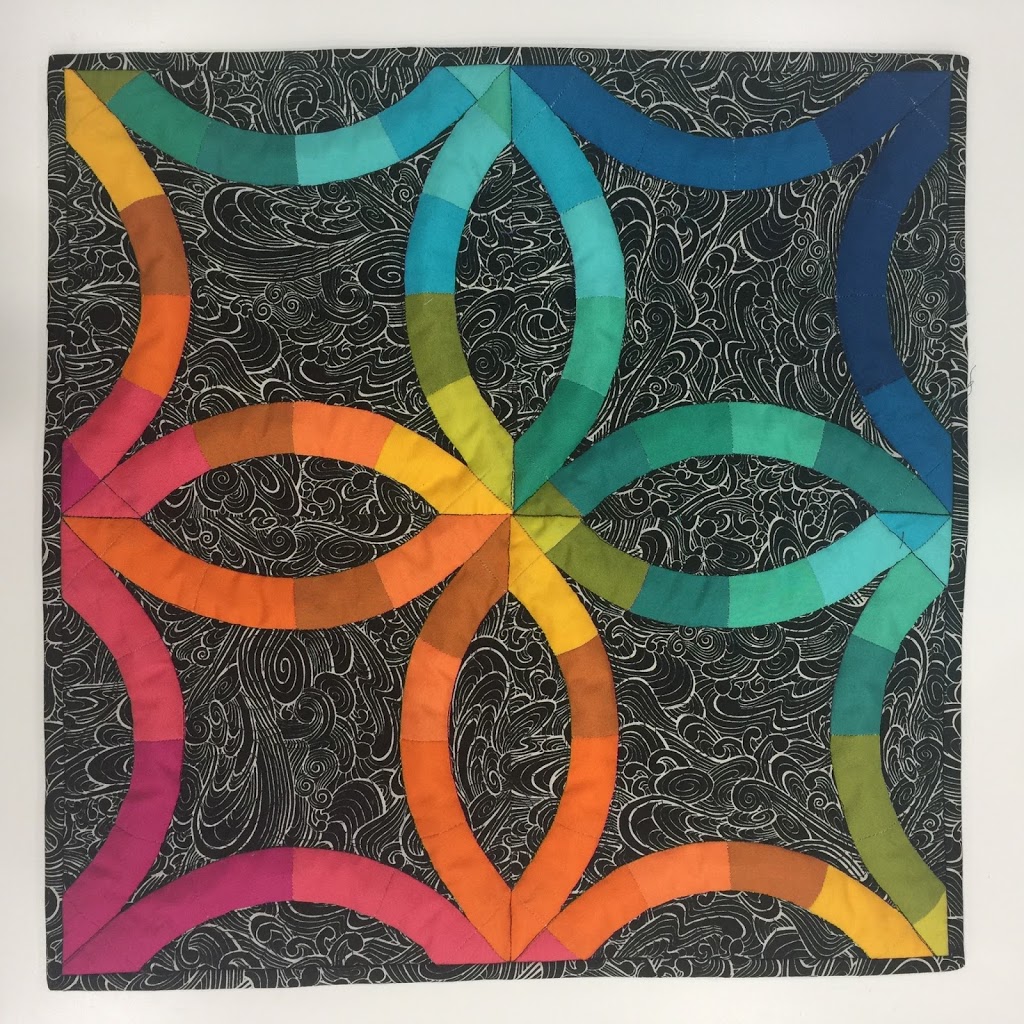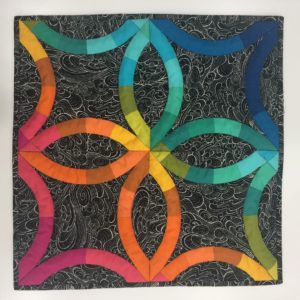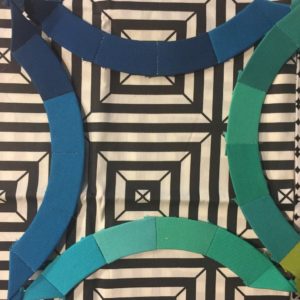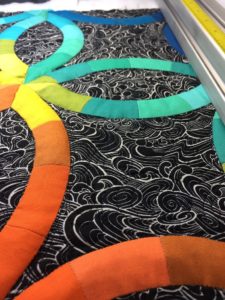Tag: english paper piecing
English Paper Piecing – Double wedding ring style!

One of the many reasons I love English Paper Piecing is the opportunity to slow down and enjoy the process of hand sewing. I also love combining multiple parts of the sewing and design process and planning out a project from start to finish. There is something so satisfying in making something completely from start to finish…even if it sometimes feels like you’re recreating the wheel.
I started by sitting down with my EQ7 software and designing a mini quilt for our local Modern Quilt Guild. We recently had our first silent auction event and mini quilt show (SO FUN!). Then I printed templates onto cardstock for the EPP pieces and started thinking about my fabrics. I had a great charm pack of Kaufman Kona Cotton Solids that I had been holding onto for over a year, and thought this would be a great opportunity to use it. I traced and cut out my fabrics, and then had to pause when I selected my background fabric.
I knew I didn’t want white, and I really like the effect black and white patterned fabrics have with solids. So I auditioned a few different fabric choices–I really thought I wanted to go with a black and white stripe, but I opted for a more solid-reading print instead. I pieced together a few of the DWR pieces and then placed them on top of my background fabric choices. Pictured below is what I thought I was going to go with, but I instead selected a Tula Pink True Colors black and white print. Because…Tula!!!
I was thrilled with the results, and playing with the color gradation and high-contrast background was really a lot of fun. But mostly, I was able to really enjoy the process and each step along the way. I don’t know about you, but from the day I started sewing, I’ve always eyed the double wedding ring quilts. I’m not sure I have the patience at this point in my life to see a full-sized quilt through, so this mini quilt was the perfect opportunity for me to cross a DWR quilt off my quilting bucket list. I had also never taken the time to hand piece curves before, but it wasn’t as bad as I thought it might be. Really, I had built it up to be this super scary moment, when all you really need to do is take a little extra time and carefully mark the centers of each EPP piece prior to piecing it, and make sure you line the centers up while adjusting the curves.
I hope your sewing adventures take you somewhere awesome this week, and try to slow down and enjoy the process behind what you’re doing. I know I really enjoy the projects where I can slow down a bit and take a break from the hustle and bustle of life. Happy sewing friends!
My Millefiori
When people hear “EPP” or English paper piecing, many probably envision little hexagons, endearingly called “hexies” pieced together with traditional or reproduction fabrics that may end up looking a little dated. I’m not crazy about that look, but I LOVE Willyne Hammerstein’s book Millefiori Quilts. (And now there’s a second book to follow the first.) In the first book, one quilt pattern in particular caught my eye–the “La Passacaglia”. It combines pentagons, triangles, diamonds, and other shapes to create a myriad of rosettes that are breathtaking. I will say there is a slight drawback if you are using the practice of fussy-cutting (positioning your templates on specific motifs on the fabric to create another design), and that is using fabric yardage inefficiently. But you’ll be making scraps for other projects as you go, so really, it’s a win-win!
Here are a couple of pictures of some of my completed rosettes.





